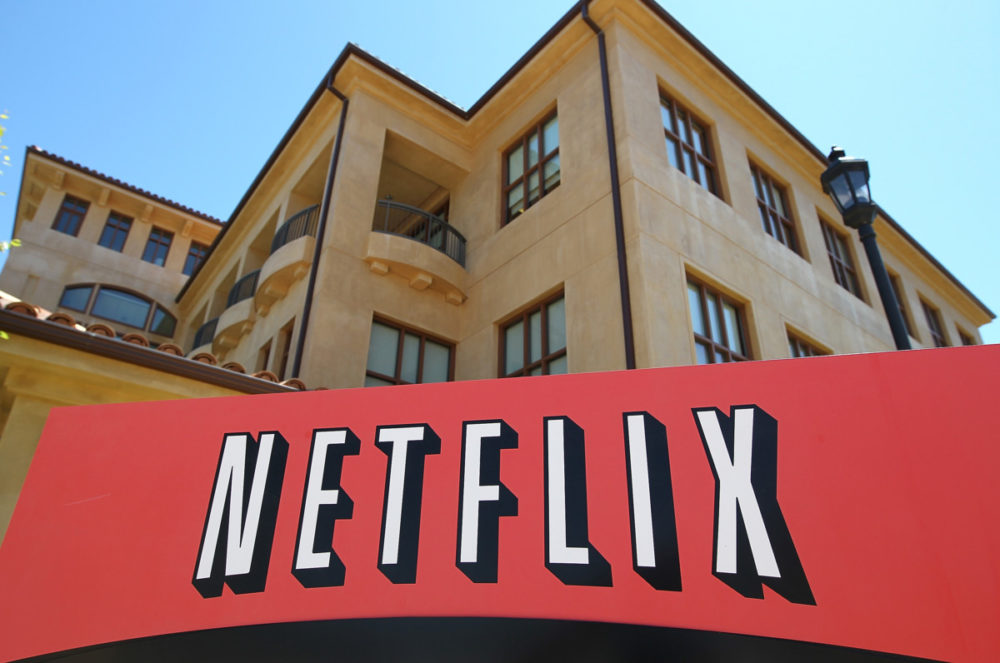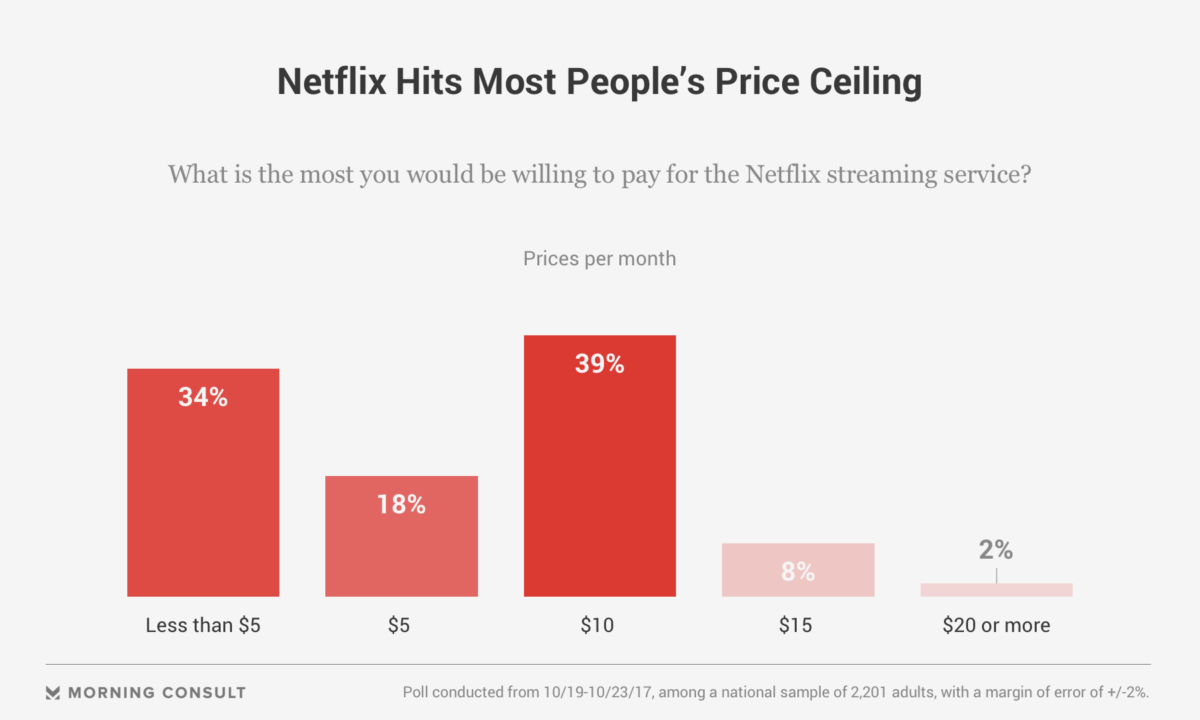October 26, 2017 at 1:48 pm ET
- Share on Facebook
- Share on Twitter
- Share on LinkedIn
- E-mail to a friend



Netflix raised its standard plan price by $1 to $10.99, keeping the basic plan price the same.
91 percent of U.S. adults wouldn’t pay more than $10 for a Netflix subscription.
Netflix Inc.’s higher new rates may scare away some of its customers.
In a new Morning Consult survey, conducted Oct. 19-23 among 2,201 U.S. adults, 91 percent of respondents said they’d pay up to $10 per month for the streaming service.
That’s 99 cents less than what a standard plan costs, thanks to Netflix’s new rates as of this month. Standard rates rose from $9.99 to $10.99, while premium rates rose from $11.99 to $13.99. Basic plans, at $7.99, will stay at the same price point.
Netflix may need to be mindful of further raising its standard and premium rates: Just 10 percent of those surveyed said they’d pay more than $10 per month for the streaming service.
Fewer people said they would pay as much for competing streaming services such as Hulu or Amazon.com Inc.’s Prime Instant Video. Only Hulu with Live TV had an identical percentage (10 percent) of respondents saying they would pay more than $10 per month for its services.

Netflix is probably aware of the public’s $10 limit, said Brett Sappington, senior director of research at the market research and consulting company Parks Associates — and that’s why they’re leaving the basic plan rate as is.
“They’re leaving an option for people to downgrade and still stick with Netflix,” Sappington said in an interview on Wednesday.
Even with higher prices, the company is still broadly popular with consumers: Netflix enjoys an 80-percent favorability rating in Morning Consult Brand Intelligence as of Oct. 26.
Though more than 90 percent of U.S. adults reported $10 as the most they would spend for a Netflix subscription, 36 percent of respondents said the $1 increase didn’t make them more or less likely to subscribe — and 36 percent said it makes them less likely to subscribe to the service.
Those aged 18-29 were less likely to say the price bump prevents them from subscribing. A higher percentage of that age group also said they had used Netflix in the past compared U.S. adults overall (77 percent versus 63 percent, respectively).
A few weeks before Netflix raised prices for new members in May 2014, CEO Reed Hastings said that “if we want to continue to expand to do more great original content, more series, more movies, we have to eventually increase prices a little bit.” The company did just that in 2016, raising the price of its standard plan to $9.99 per month.
Shortly after the news of Netflix’s latest price increase, Hastings said in an earnings call that “prices are relative to value,” noting that the streaming service will continue to expand its content offerings. However, Chief Content Officer Ted Sarandos added that “there’s no timing correlation between our intent to grow content and to grow content spending, and the price increases,” with the current price increase planned for some time.
Sappington said users shouldn’t expect across-the-board price increases again soon — at least not in the United States. Netflix’s international presence gives the company flexibility that other streaming services don’t have: The company can raise rates in other countries, so as not to disrupt every customer base.
Netflix did not respond to a request for comment.
A 35-percent plurality of those surveyed in the recent poll said cost was the most important aspect when choosing which medium to use to watch television. And 73 percent said they were satisfied with the cost of their streaming services, compared to 37 percent who were satisfied with the cost of their cable or satellite television subscriptions.
“Ultimately, it comes down to perceived value,” Sappington said. “As long as Netflix continues to put out original content that’s not available in other places, that $1 will pale in comparison to [customers’] ability to access that.”